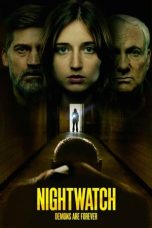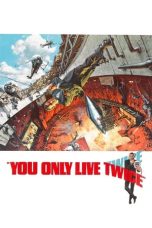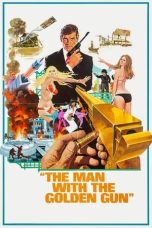- 1
- 2
- Source: James Martin (premier)
- Liga Utama Inggris
- Martin Place, Sydney
- Paul Martin
- Aston Martin
- LeBron James
- Arsenal F.C.
- Un premier amour
- Daniel Craig
- Liga Utama Inggris 2023–2024
- Newcastle United F.C.
- James Martin (premier)
- James Martin
- Russell Martin (footballer)
- 2024–25 Premier League
- James Bree (footballer)
- 2023–24 Premier League
- Attorney General Martin
- List of footballers with 500 or more Premier League appearances
- James J. Martin (priest)
- Premier League
Transporter 3 (2008)
The Transporter Refueled (2015)
Transporter 2 (2005)
Shooting Stars (2023)
White House Down (2013)
You Only Live Twice (1967)
X-Men (2000)
Thunderball (1965)
Octopussy (1983)
Live and Let Die (1973)
Maze Runner: The Scorch Trials (2015)
Moonraker (1979)
No More Posts Available.
No more pages to load.
Sir James Martin, QC (14 May 1820 – 4 November 1886) was three times Premier of New South Wales, and Chief Justice of New South Wales from 1873 to 1886.
Early career
Martin was born in Midleton, County Cork, Ireland but emigrated with his parents to Sydney, Australia at the age of one. He was educated at Dame's School, Parramatta and, despite his family's poverty, the Sydney Academy and Sydney College under the tutelage of William Timothy Cape, and left school at the age of 16 to become a reporter.
In 1838, Martin published the Australian Sketch Book, a series of character sketches he dedicated to Sydney barrister Bob Nichols, for whom he was then working as an articled clerk in 1840.
Martin qualified as a solicitor in 1845, and combined his legal career with employment as a newspaper editor and publisher. He married Isabella Long on 20 January 1853 and together they produced 15 children.
Early political career
In February 1848 Martin nominated as a candidate for a by-election for the electorate of Durham in the New South Wales Legislative Council, but withdrew before polling day. In the general election held later in the same year he was a candidate for the electorate of Counties of Cook and Westmoreland, which he won with a margin of 16%. His election however was declared void on the grounds that he did not meet the property qualifications to stand, however he was re-elected unopposed. Martin subsequently sued the Speaker of the Legislative Council, Charles Nicholson and the Sergeant at Arms, William Christie, for trespass for having him removed when there had been no decision of the Electoral Court in accordance with the Electoral Act 1843. The Full Court of the Supreme Court held that under the Electoral Act 1843 it was only the Electoral Court that could determine there was a vacancy and not the Governor.
Martin was an effective legislator but his sharp tongue and intemperate speeches to the House made him few friends among his parliamentary colleagues. His most notable political achievement in his first eight years in office was to initiate the Parliamentary debate that led to the establishment of a branch of the royal mint in Sydney.
In 1856 the partly elected unicameral Legislative Council was abolished and replaced with a new parliament with elected members of the Legislative Assembly and appointed members of the Legislative Council. Martin was elected as one of two members for Cook and Westmoreland. When that electorate was largely replaced by the single member electorate of Hartley, Martin successfully stood for the new four member electorate of East Sydney. He was subsequently the member for Orange, Tumut, Monaro, Lachlan and East Macquarie. In August 1856 he was made Attorney-General of New South Wales in the first ministry of Charles Cowper. The appointment was controversial, as Martin was the first holder of the office who had not been admitted as a barrister. He had to resign his seat as a result of accepting the office, however he was re-elected unopposed. The appointment was brief, as the government was defeated in a no-confidence motion in October 1856 and Martin returned to the backbench.
Martin was admitted to the bar in 1856 and was made a Queen's Counsel in 1857. He returned as Attorney General in the second Cowper Ministry in September 1857, and was again re-elected unopposed. As Attorney General however, his reputation for intemperate language continued and after a series of conflicts with fellow Ministers he resigned the office in November 1858.
Premier of New South Wales
In October 1863, Martin was asked by the Governor of New South Wales to form a government with a mandate to address rising State deficits and rural unemployment. As Premier and Colonial Secretary Martin promptly introduced measures to reduce immigration and increase tariffs, but was unable to secure Parliamentary support for many of his reforms. With limited achievements to its credit, the government suffered a substantial swing at the 1865 election and Martin stepped down to make way for the return of Charles Cowper.
Cowper was once again defeated in a no-confidence motion in December 1865, and in January 1866 Martin became Premier for the second time as leader of a coalition government with former rival Henry Parkes. His government resigned in October 1868, but he returned to the Premiership for a third and final time between December 1870 and May 1872.
After politics
Martin retired from Parliament in November 1873 and was immediately named to the vacant position of Chief Justice of New South Wales. He held the post for 13 years, despite considerable ill health in later life.
James Martin died at home in Potts Point, Sydney on 4 November 1886 and buried in St Judes churchyard in Randwick, NSW. in 1909 his remains were moved to a new underground vault in the impressive Waverley Cemetery.
Honours
Martin was made a Queen's Counsel in 1857, and was knighted in 1869. Martin Place, a pedestrian mall in the central business district of Sydney was named after him in 1892. 'Lady Martin Beach' a small beach accessible to the public from Wolseley Road, Point Piper, New South Wales is named after his wife, Isabella who resided at nearby Woollahra House. Late in 2020, two new identical statues were put up in Parramatta and Martin Place as he used to go from Parramatta to Martin Place for school.
See also
First Martin ministry (1863–1865)
Second Martin ministry (1866–1868)
Third Martin ministry (1870–1872)
140-142 Cumberland Street, The Rocks
List of judges of the Supreme Court of New South Wales
Notes
References
Serle, Percival (1949). "Martin, James". Dictionary of Australian Biography. Sydney: Angus & Robertson.
The Honourable Sir James Martin, Kt – Law and History 2: Lawlink NSW
Boase, George Clement (1893). "Martin, James (1815-1886)" . In Lee, Sidney (ed.). Dictionary of National Biography. Vol. 36. London: Smith, Elder & Co.






























